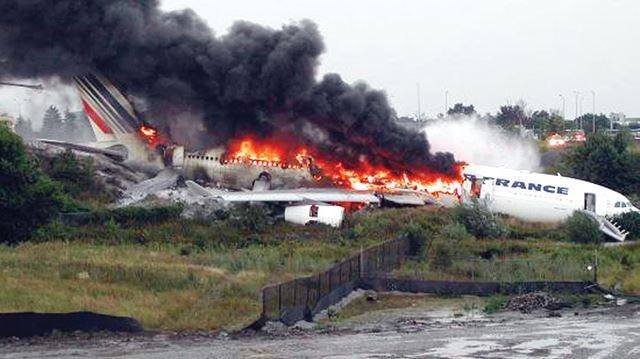This website uses cookies so that we can provide you with the best user experience possible. Cookie information is stored in your browser and performs functions such as recognising you when you return to our website and helping our team to understand which sections of the website you find most interesting and useful.
Your support helps us to tell the story
From reproductive rights to climate change to Big Tech, The Independent is on the ground when the story is developing. Whether it's investigating the financials of Elon Musk's pro-Trump PAC or producing our latest documentary, 'The A Word', which shines a light on the American women fighting for reproductive rights, we know how important it is to parse out the facts from the messaging.
At such a critical moment in US history, we need reporters on the ground. Your donation allows us to keep sending journalists to speak to both sides of the story.
The Independent is trusted by Americans across the entire political spectrum. And unlike many other quality news outlets, we choose not to lock Americans out of our reporting and analysis with paywalls. We believe quality journalism should be available to everyone, paid for by those who can afford it.
Your support makes all the difference.
“The aircraft crossed the service road, then Convair Drive – the landing gear, and two inboard engines leaving gouges in the pavement of Convair Drive. The aircraft knocked down the guard rail along the western side of Convair Drive and the fourth approach light tower.”
So said the Transportation Safety Board of Canada after a crash at Toronto airport – not Monday’s accident involving a Delta Airlines plane, but an incident at the same hub two decades earlier.
The terrifying ordeal of the 80 passengers and crew on board DL4819 from Minneapolis-St Paul to Canada’s busiest airport is now under investigation. I will not speculate on possible causes that flipped the plane on its roof; the experts are on the case. But I have been looking back two decades for lessons from the last incident in which an aircraft was destroyed at Toronto airport: Air France flight AF358 in August 2005.
The accident report reads: “The aircraft was not able to stop on the 9,000-foot runway and departed the far end at a ground speed of about 80 knots [92mph]. The aircraft stopped in a ravine and caught fire.”
As with many air crashes, a host of factors came together to cause the accident – including pilots’ concern about fuel reserves.
The accident report concludes: “Having made their decision to land, the crew members used all their energy to concentrate on this task and missed cues that should have warranted a review of that decision.”
These “missed cues” are listed:
- The runway looked like a lake
- The aircraft deviated above the glide path
- The landing was going to be farther down the runway than usual
- The wind speed was reportedly increasing and the wind direction was changing
- Braking action was reported as poor
- Visibility became close to nil near the threshold
The accident happened. Like many, it was thankfully survivable. Then, as with the Delta crash two decades later, all passengers and crew members were able to evacuate the aircraft. They included three passengers who needed wheelchairs and one blind passenger.
Canada’s transport minister at the time, Jean Lapierre, declared it “a miracle”. In fact, the successful evacuation was down to design, training and execution. There is no substitute for well-trained cabin crew performing their most important duty: evacuating the aircraft in a hurry.
But passengers must play their part as well. The first essential: pay attention to the safety demonstration. Where, exactly, are those emergency exits?
Next, leave everything behind. The report into that 2005 accident says: “The safety of passengers and crew continues to be jeopardised by passengers (approximately 50 per cent) who retrieve their carry-on baggage before evacuating.
“Although cabin crew shout to passengers to leave their carry-on baggage behind during emergency evacuations, this information is provided at a time when passengers are highly stressed and the noise level in the cabin is likely fairly high – not an optimal time for understanding or adhering to critical safety information.
“During the emergency evacuation of AF358, many passengers took their carry-on baggage with them. This action presented a significant risk to safety.
"The consequences could include impeding an orderly and timely evacuation, damaging an evacuation slide, and increasing the potential for injury.”

Plus ca change… footage of the Delta Airlines accident in Toronto shows some evacuated passengers clutching their cabin baggage. One captain for a leading US airline told me: “It was distressing to see some after the evacuation with personal belongings. Always leave your stuff behind and save your hide.”
Over the past eight weeks, we have seen an unusual series of fatal crashes: an Azerbaijani plane maimed by Russian anti-aircraft fire; a Korean aircraft destroyed on landing; and a collision between a commuter jet and an army helicopter at Washington DC. Yet aviation has never been safer than during this decade.
In due course, the Transportation Safety Board will publish its report into Monday’s calamitous landing. The document will make clear the sole purpose is “advancing transportation safety” – not “to assign fault”. And the lessons learnt will help flying become even safer.
For more reassurance: the UK and Ireland are ahead of the rest of the world. They are the homes for the safest airlines in the world in terms of passengers flown without a fatal accident: easyJet and Ryanair. Just remember: in the vanishingly unlikely event that you are involved in an emergency evacuation, leave your cabin baggage behind. One last thing: always wear sensible footwear for take-off and landing, just in case you need to run in challenging circumstances.



 Africana55 Radio
Africana55 Radio 
